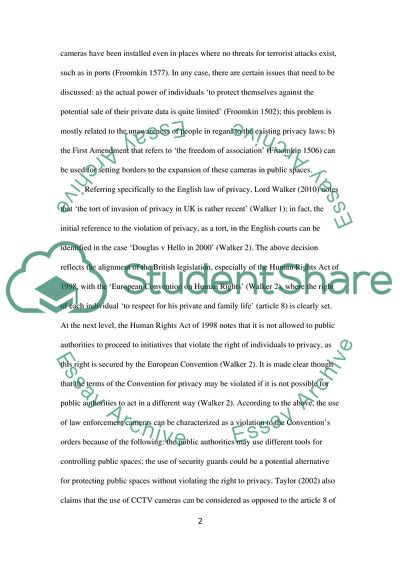Cite this document
(Are Law Enforcement Cameras an Invasion of Privacy Literature review Example | Topics and Well Written Essays - 2250 words - 1, n.d.)
Are Law Enforcement Cameras an Invasion of Privacy Literature review Example | Topics and Well Written Essays - 2250 words - 1. https://studentshare.org/information-technology/1802480-based-on-epistomological-research-are-law-enforcement-cameras-an-invasion-of-privacy
Are Law Enforcement Cameras an Invasion of Privacy Literature review Example | Topics and Well Written Essays - 2250 words - 1. https://studentshare.org/information-technology/1802480-based-on-epistomological-research-are-law-enforcement-cameras-an-invasion-of-privacy
(Are Law Enforcement Cameras an Invasion of Privacy Literature Review Example | Topics and Well Written Essays - 2250 Words - 1)
Are Law Enforcement Cameras an Invasion of Privacy Literature Review Example | Topics and Well Written Essays - 2250 Words - 1. https://studentshare.org/information-technology/1802480-based-on-epistomological-research-are-law-enforcement-cameras-an-invasion-of-privacy.
Are Law Enforcement Cameras an Invasion of Privacy Literature Review Example | Topics and Well Written Essays - 2250 Words - 1. https://studentshare.org/information-technology/1802480-based-on-epistomological-research-are-law-enforcement-cameras-an-invasion-of-privacy.
“Are Law Enforcement Cameras an Invasion of Privacy Literature Review Example | Topics and Well Written Essays - 2250 Words - 1”. https://studentshare.org/information-technology/1802480-based-on-epistomological-research-are-law-enforcement-cameras-an-invasion-of-privacy.


